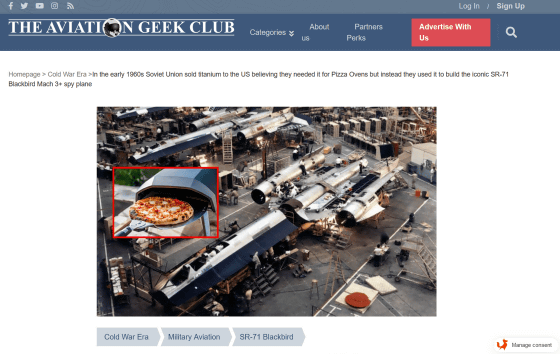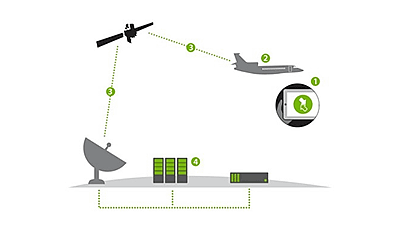The United States had imported titanium from the Soviet Union during the Cold War under the guise of ``using it for a pizza kiln'' to develop a supersonic reconnaissance aircraft in secret

In 1964, when the Western countries centered on the United States and the Eastern countries centered on the Soviet Union (Soviet Union) were engaged in
In the early 1960s Soviet Union sold titanium to the US believing they needed it for Pizza Ovens but instead they used it to build the iconic SR-71 Blackbird Mach 3+ spy plane - The Aviation Geek Club
https://theaviationgeekclub.com/in-the-early-1960s-soviet-union-sold-titanium-to-the-us-believing-they-needed-it-for-pizza-ovens-but-instead-they- used-it-to-build-the-iconic-sr-71-blackbird-mach-3-spy-plane/

The Mysterious A-12 Archangel: What You Don't Know!-YouTube
The high-altitude reconnaissance aircraft SR-71 is a derivative of the A-12 developed as a successor to the U-2 , and due to its different structure from conventional aircraft, it was able to fly at supersonic speeds of Mach 3. . The SR-71's maiden flight took place on December 22, 1964, and the first SR-71 entered service in January 1966 with the 4200th Strategic Reconnaissance Wing (later the 9th Reconnaissance Wing) at Beale Air Force Base , California. ) was handed over to After that, on March 21, 1968, it was also deployed to Kadena Airfield in Okinawa, and it was said that it performed a reconnaissance mission to North Vietnam and Laos.
SR-71 is commonly known as 'Blackbird' due to its unique appearance, and when it was deployed in Okinawa, it was also called 'Hub' due to its unique shape and sortie at night.

The SR-71 was not only capable of flying faster and higher than any aircraft ever developed, but it was packed with tricks to maximize stealth. Kelly Johnson, a legendary engineer at Lockheed's
During the development process, the problem was that the airframe that reaches the maximum speed of Mach 3 continuously reaches a temperature of 1000 degrees Fahrenheit (537.8 degrees Celsius) or more due to the adiabatic compression in which the atmosphere is rapidly compressed. The point is that the same metal will melt the fuselage during flight.
Titanium alloy is necessary to solve this heat resistance problem while achieving both strength and weight reduction, and in fact, 93% of the entire SR-71 airframe is made of titanium alloy. However, the United States did not have the necessary mines to produce titanium, and at that time it had to be imported.
At the time of writing the article, Australia and South Africa were the major exporters of titanium ore, but the major exporter in the late 1950s and 1960s was the Soviet Union, which the United States was hostile to at the time. Since the SR-71's main mission was to reconnaissance in the Eastern Bloc, it was obviously not possible to openly import titanium ore from the Soviet Union for manufacturing reconnaissance aircraft.

Therefore,
In this operation, the CIA made up a cover story that 'titanium used for pizza kilns that bake pizza at high temperatures is necessary' and imported titanium ore from the Soviet Union. There are multiple testimonies that Soviet titanium was actually used in the SR-71, so this cover story seems to have helped.

Related Posts:







